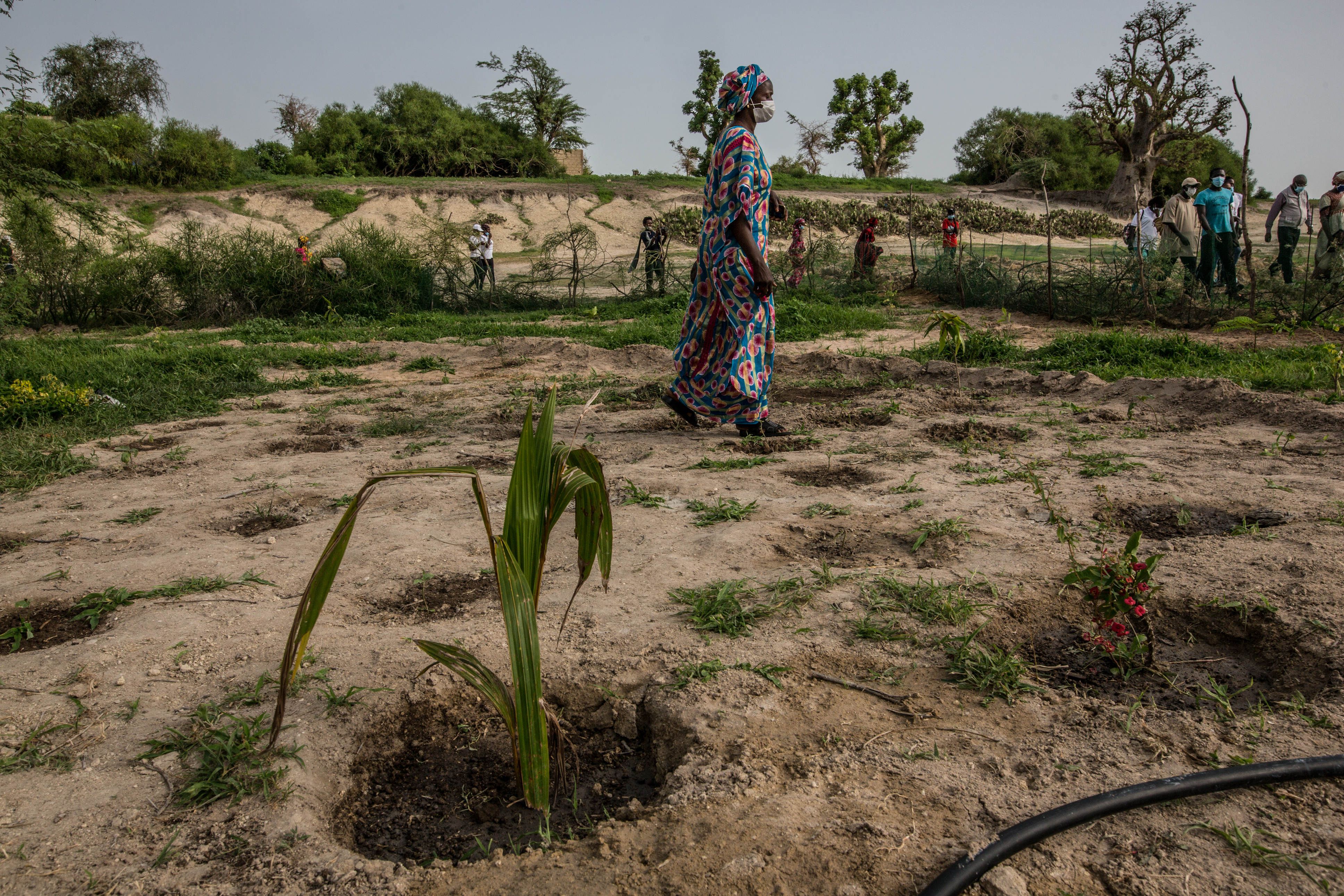“Great Green Wall” in Africa Closer to Implementation

The “Great Green Wall”—From Idea to Urgent Need
The first projects to stop the expansion of the Sahara date back to the 1950s. A tree barrier protecting against desertification was implemented in the 1980s by Burkina Faso, and in 2007 its creation became the official policy of the African Union for 11 member states (including Mauritania, Mali, and Niger) with a goal of completing it by 2030. Initially, the idea of a barrier to the desert was based on the assumption that it is a degraded environment that should be countered. As ecological knowledge increased, this approach changed. Today, the Sahara itself is considered a natural, healthy environment, and the proposed “Great Green Wall” would be a wide transition zone with diverse vegetation and developed sustainable agriculture. It is to be located across 20 countries between the Atlantic and Indian oceans (8,000 km long), including the countries of North Africa. The UN Food and Agriculture Organisation (FAO) has played a leading role in its implementation in recent years. However, under its leadership, only about 4% of the “wall” (15% Ethiopia’s independent actions are included) was successfully completed due to a lack of resources, coordination, and monitoring of individual subprojects, as well as security problems, especially in the Sahel. World leaders took a renewed interest in the project with the rise in awareness of the global climate crisis. According to UN estimates from 2019, 900 million hectares of degraded land around the world need to be regenerated to slow down climate change. The “Great Green Wall”, with an area of 100 million hectares (the combined area of France and Spain), would therefore be an important component of activities on a global scale under the UN Decade of Ecosystem Restoration (2021-2030). It would also reduce the cost of climate change—last year, African governments spent 2-9% of GDP on mitigation and adaptation to climate change.
Paris Summit
Participants in the One Planet Summit for Biodiversity in Paris (11 January) declared funding for the project would be extended for five years in the amount of $14.3 billion. This is a significant qualitative difference compared to the FAO’s current budget—$238 million—and more than the organisers’ $10 billion goal. The largest amounts were declared by the World Bank ($5 billion) and the European Commission ($2.5 billion). The African Development Bank (AfDB) pledged to mobilise another $6.5 billion over five years. Its president, Akinwumi Adesina, a Nigerian, assumed the role of political representative of the project and coordinator of its financial support. Over 100 private companies also pledged to support the transformation of agriculture in countries where the “Wall” will be placed. According to the declarations of the summit hosts, the regeneration of 100 million hectares of green area will sequester 250 million tonnes of CO2.
Unlike the previous regional approach to the “Wall”, the One Planet Summit placed it more clearly in the global context. The COVID-19 pandemic has reinforced the argument that biodiversity has a positive effect on human health and will reduce the occurrence of similar crises in the future. The construction of the Great Green Wall in Africa also is expected to provide knowledge about regeneration for other areas, such as the Amazon, the Great Barrier Reef, and the flora of developing small island states. The donors also hope that the initiative will contribute to the social development of the Sahel, which is necessary to reduce the sources of instability in the region and irregular migration. President Emmanuel Macron at the end of the summit spoke about the prospect of creating up to 10 million jobs in the region thanks to the project, primarily as a result of agricultural development.
Challenges
Although the Paris summit presented a very optimistic narrative around the “Great Green Wall” initiative, its success may be jeopardised by both formal and practical difficulties in its creation. The African Development Bank will have huge problems maintaining its commitments in the event of a possible ratings’ downgrade. It is one of the few African institutions which leading agencies (Fitch Ratings, S&P, Moody’s, JCR) award the highest “AAA” rating. Even a drop to “AA+”, possible in the event of a downgrade of the U.S., one of the bank’s major shareholders, would limit its access to the full international financial market. To prevent this from happening, Adesina is aiming to increase the bank’s capital, among other efforts.
To keep the newly planted vegetation in place and not used for fuel, it is necessary to drastically increase the availability of electricity in the region. AfDB plans to link the “Wall” initiative with the bank’s other activities in the region, such as the “Desert to Power” programme that develops solar farms in the Sahara desert, but it will be difficult to achieve the necessary scale in a short time. Therefore, the biggest challenge will be to run the project in such a way that local communities feel they are co-owners and jointly responsible for its success. This is clearly indicated by the experience of organisations successfully implementing similar activities in Africa, albeit on a much smaller scale, such as Tree Aid, which lobbies for best practices. However, there is a risk that the global institutions involved in the project will put speed and mere quantity above the community dimension and local know-how, hoping for an easy statistical success. This risk translates into the choice of working methods. For example, trees planted with tractors (which must be imported and is relatively expensive) have a lower chance of survival than those grown from shoots naturally occurring near fallen trunks, which, however, is a process requiring protection for a long period. Local experience is also crucial for determining with plant species will become established in a given area without harming the local ecosystem or finding an economic use them.
An additional challenge will be how to implement the project in areas plunged into armed conflict. While the project is intended to address the root causes of many of them, the current realities of the security crises in the Sahel, the Lake Chad region, or the Horn of Africa may prevent physical access to large parts of Mali, Burkina Faso, Niger, Nigeria, Somalia, or Ethiopia. Working in the field will require entering into politically sensitive agreements with armed groups, including extremists.
Conclusions
The “Great Green Wall” will be the flagship initiative of the United Nations Decade on Ecosystem Restoration. The financial impulse and involvement of the world’s most important institutions allows for a high pace of implementation, which would see it completed within the originally set deadline of 2030. The transfer of the burden of running the project from the FAO to AfDB, the World Bank, and the European Commission offers an opportunity to improve the coordination of individual activities. At the same time, however, it creates a risk of departing from the best practices developed on the spot in the selection of measures and methods of natural resources restitution. The largest sponsors should take into account and—skilfully as necessary—maintain the bottom-up demand for the “Wall”.
The initiative should deepen the Euro-African partnership. The fight against climate change is an area where there is a convergence of interests and approaches on the part of African countries and the European Union. The outcome of the One Planet Summit for Biodiversity will foster agreement between the EU and African Union on preparations for a summit, delayed by the pandemic, that now is likely to take place in Lisbon this spring.
From the European perspective, the final declarations from the One Planet Summit about an increase in job opportunities in the countries of the “Great Green Wall” sound extremely attractive. Therefore, it is in the EU’s interest to exert pressure on the most relevant institutions to guarantee the sustainability of the project and foster social development in the region. This would be an important counterbalance to the military-policing methods that have dominated the last decade as a response to security and migration crises in the region, for example with regard to Mali.


